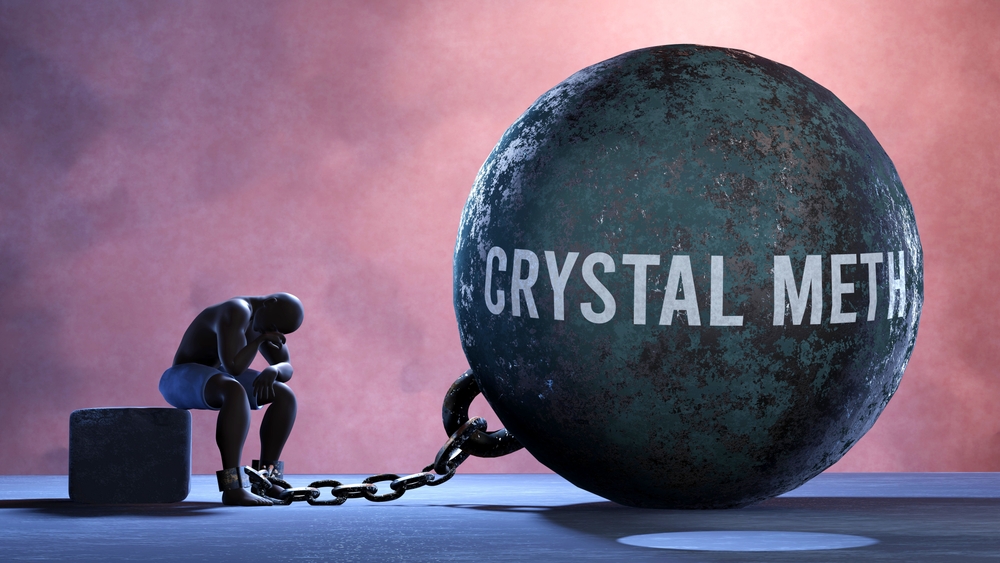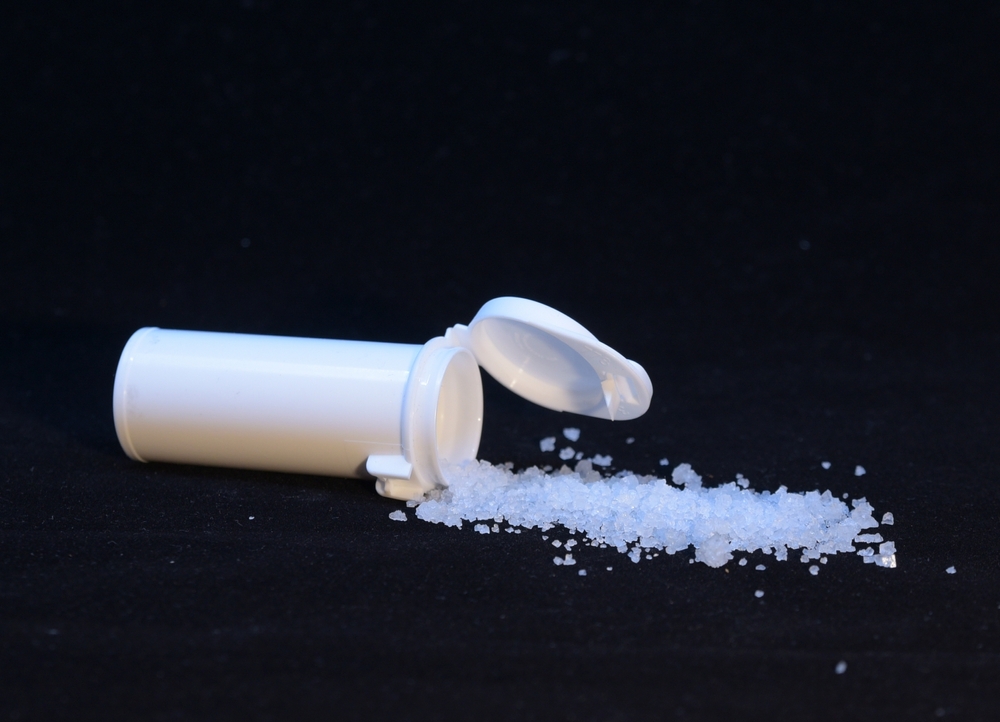Last Updated:
June 10th, 2025
Crystal Meth Addiction | Signs, Effects and Causes
What is crystal meth?
Crystal meth, short for crystal methamphetamine, is a powerful and highly addictive stimulant that affects the central nervous system. It comes in clear, chunky crystals or bluish-white rocks and is usually smoked, snorted, injected or swallowed.
Chemically, it is similar to amphetamine, a drug used to treat certain medical conditions like ADHD and narcolepsy. However, crystal meth has no legal medical use in the UK and is classified as a Class A drug, meaning its possession, distribution or production is illegal.
Understanding what crystal meth is can help demystify its dangerous appeal and highlight the risks involved with its use.

Is crystal meth addictive?
Crystal meth is one of the most addictive substances due to how it impacts the brain’s reward system.
When taken, it triggers a surge of dopamine, a neurotransmitter responsible for feelings of pleasure and reward. This intense rush creates a powerful sense of euphoria that users often crave again and again. Over time, the brain becomes dependent on the drug to produce dopamine, making it harder to experience pleasure from everyday activities.
This chemical dependence, combined with the psychological pull for the euphoric high, makes crystal meth extremely addictive and difficult to quit without professional support.
The devastating impact of crystal meth addiction
Crystal meth addiction can infiltrate every aspect of a person’s life, causing damage that extends far beyond physical health. Its destructive power can leave a lasting imprint on relationships, mental wellbeing and overall quality of life.
Beyond these visible effects, the drug strains the heart, causing irregular heartbeats and increasing the risk of heart attacks. Users become more susceptible to infections and other serious health complications as the immune system weakens.
Over time, the drug’s chemical disruption of the brain leads to long-term cognitive impairment, affecting memory, attention and problem-solving skills, making everyday tasks increasingly difficult.
Isolation also becomes common as users withdraw from those closest to them.
Many find themselves trapped in a cycle of economic instability that feels impossible to escape.
What are the signs of crystal meth addiction?
Recognising the signs of crystal meth addiction can be the first step toward recovery, whether you are concerned about yourself or a loved one. The signs can manifest physically, psychologically and behaviourally, making early detection crucial.
Physical signs
- Rapid weight loss: Crystal meth suppresses appetite, leading to dangerous weight loss.
- Poor dental health (‘meth mouth’): The drug causes dry mouth and teeth grinding, resulting in severe dental issues.
- Skin sores and frequent itching: Users often experience intense itching, causing open sores and infections.
- Hyperactivity or restlessness: The stimulant effect makes users highly active and unable to stay still.
- Dilated pupils and rapid eye movement: Crystal meth triggers pupil dilation and uncontrollable eye movements.
Psychological signs
- Intense mood swings: Users can switch rapidly between extreme highs and lows.
- Paranoia and suspicious thoughts: The drug induces irrational fears and mistrust of others.
- Hallucinations or delusions: Prolonged use can cause users to see or believe things that aren’t real.
- Severe anxiety or depression: The comedown from crystal meth often leaves users feeling deeply anxious or depressed.
- Memory problems and confusion: The drug impairs memory and decision-making.
Behavioural signs
- Increased secrecy or isolation: Users may withdraw from loved ones to hide their drug use.
- Financial difficulties due to drug expenses: The high cost of the drug can cause overwhelming debt.
- Neglect of responsibilities at work or home: Addiction often leads to missed work, neglected chores or broken commitments.
- Risky or criminal behaviour: To fund their addiction, some users turn to illegal activities.
- Loss of interest in previously enjoyed activities: Hobbies and interests are abandoned in favour of drug use.
Where can I get help for a crystal meth addiction?
If you or someone you care about is struggling with crystal meth addiction, know that you’re not alone. Seeking professional support can feel overwhelming, but taking that first step can lead to lasting change and a healthier future.
What does Crystal Meth addiction treatment involve?
Crystal meth addiction treatment typically includes three key stages: detox, therapy and aftercare. Each stage plays a crucial role in achieving and maintaining long-term recovery.
- Detox: A medically supervised detox programme helps manage withdrawal symptoms safely and comfortably. This critical first step clears the body of harmful substances, setting a strong foundation for further treatment.
- Therapy: Evidence-based therapies such as cognitive-behavioural therapy (CBT), dialectical behaviour therapy (DBT), and one-to-one counselling address the root causes of addiction. These sessions help develop effective coping strategies and build essential life skills for sustainable recovery.
- Aftercare: Recovery doesn’t end after completing treatment. Aftercare services often include group therapy, alumni meetings and personalised relapse prevention plans. Ongoing support can make a significant difference in maintaining long-term sobriety.

If you or someone you know is ready to break free from crystal meth addiction, reaching out to a qualified treatment provider can be a life-changing step toward recovery. Compassionate professionals are ready to support your journey with understanding, care and expertise.
Our compassionate team are ready and available to take your call, and guide you towards lasting the lasting addiction recovery you deserve.

